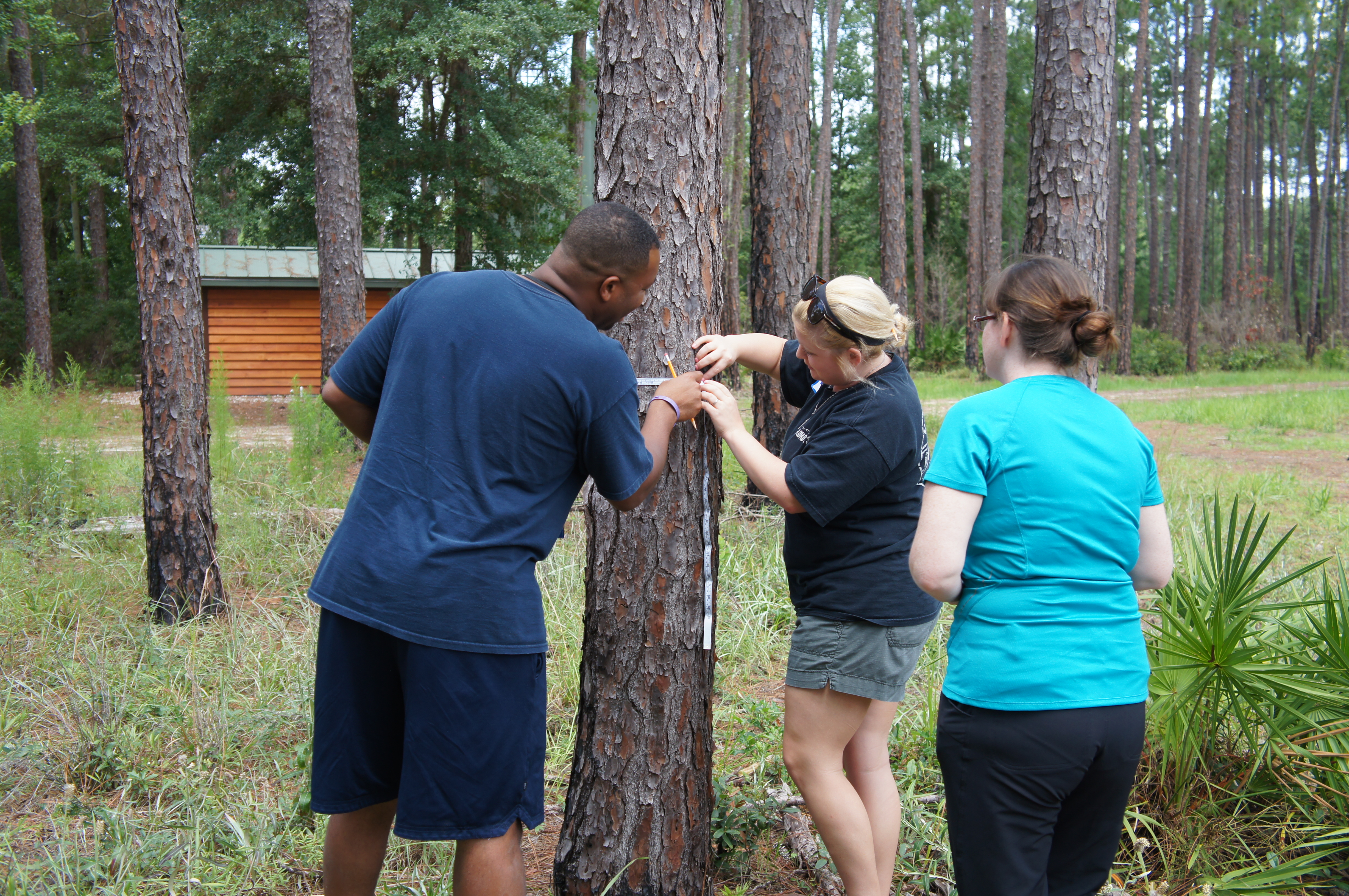 Activity 8: Counting Carbon
Activity 8: Counting Carbon
Overview
This activity helps students understand carbon sequestration in trees and teaches them how to compare carbon sequestration potential for different land uses. Students measure trees near their school and calculate the amount of carbon stored in individual trees. Students then calculate the carbon sequestration potential of a pine forest and compare that to various land-use types in their state. By estimating the amount of carbon emitted by human activities in their state, students can discuss their forest’s ability to sequester atmospheric carbon and potential ethical implications of having excess carbon or untapped sequestration potential.
Downloads
Full Activity (with student pages included)
Student Pages
- Protractor Template Student Page
- Carbon in a Tree: Option A, Student Page
- Carbon in a Tree: Option B, Student Page
- Carbon in Pines Student Page
- Your Carbon Footprint Student Page
- Carbon in Different Landscapes Student Page
Presentation
- Carbon in Different Landscapes Presentation
- Introducing Carbon Presentation
- Introducing Carbon Teacher Notes
Answer Keys
Supporting Materials
- Regional Adaptations for Carbon in Different Landscapes
- Tree Carbon Calculator
- English Units Version (all student pages)
Links
- Carbon in U.S. Forests, Online Tools – U.S. Forest Service website with a fact sheet and graphics for the estimations of carbon storage in U.S. forests.
- Greg McPherson’s Tree Carbon Calculator – Podcast with scientist Greg McPherson talking about a tool he developed to help determine how much carbon a tree sequesters.
- National Tree Benefit Calculator – Based on U.S. Forest Service’s i-Tree tools, this online calculator provides data about the environmental and economic value, on an annual basis, of street-side trees.
- Urban Forests and Climate Change – Online software that allows users to enter information on climate region and tree size or age to calculate several carbon storage and sequestration values.
Teacher Tools
 Section 3 Activities
Section 3 Activities
Teacher Comments
It was great dimensional analysis practice for my AP Students.
I would have them plan a carbon timeline at the end. Or write a letter to a politician or official to explain with the evidence they acquired what they learned about carbon emissions and why it matters. Or if they were to design something–a building, a school, a car–what would they do. Because in the end, that’s what this lesson is about–why does this matter?
For assessment, I also used student response to oral questions and the type of questions the students asked about trees, forests, and climate change to determine how well they were “getting” the big idea.
I would also incorporate this activity into the discussions and calculations of biomass. That way students can see the relativity since they have a hard time understanding the “invisible” carbon atom.


